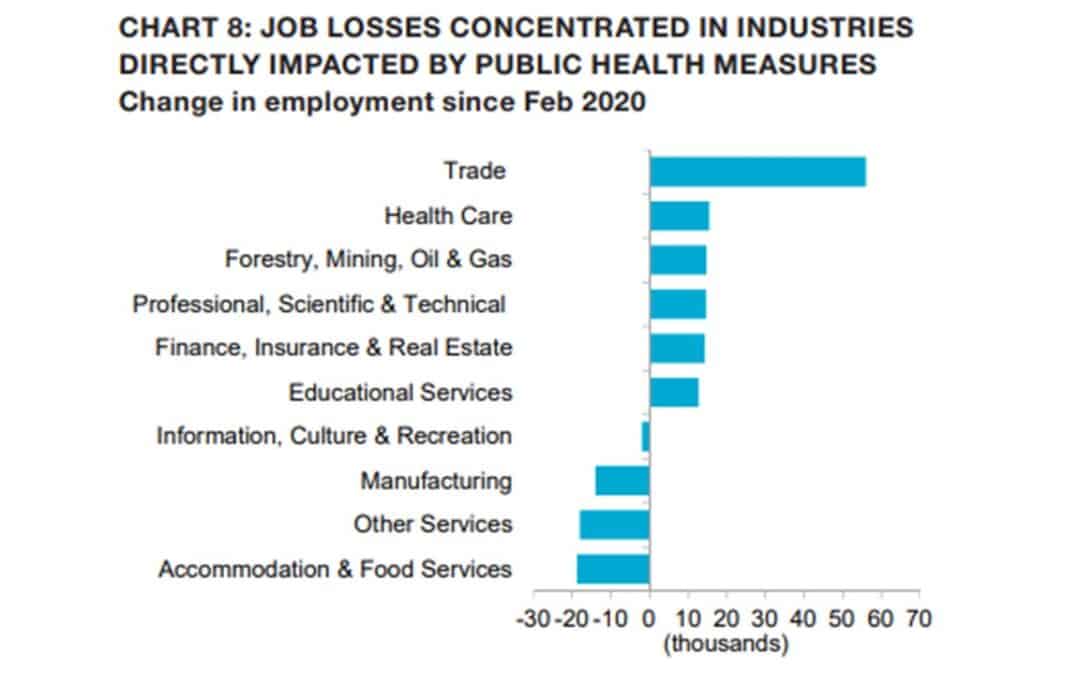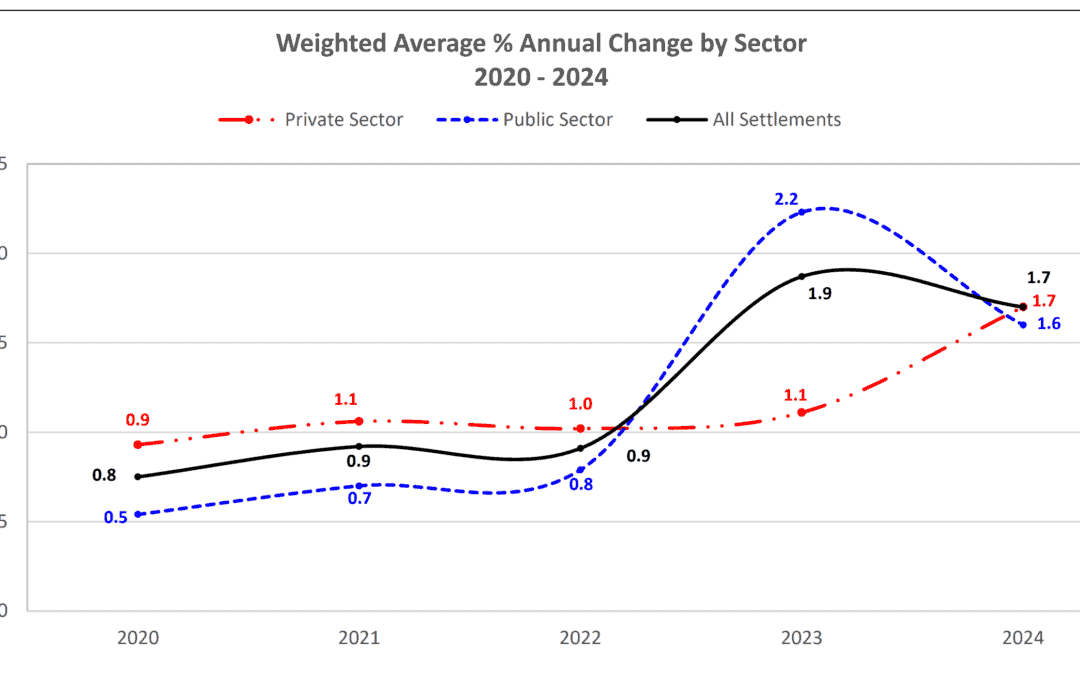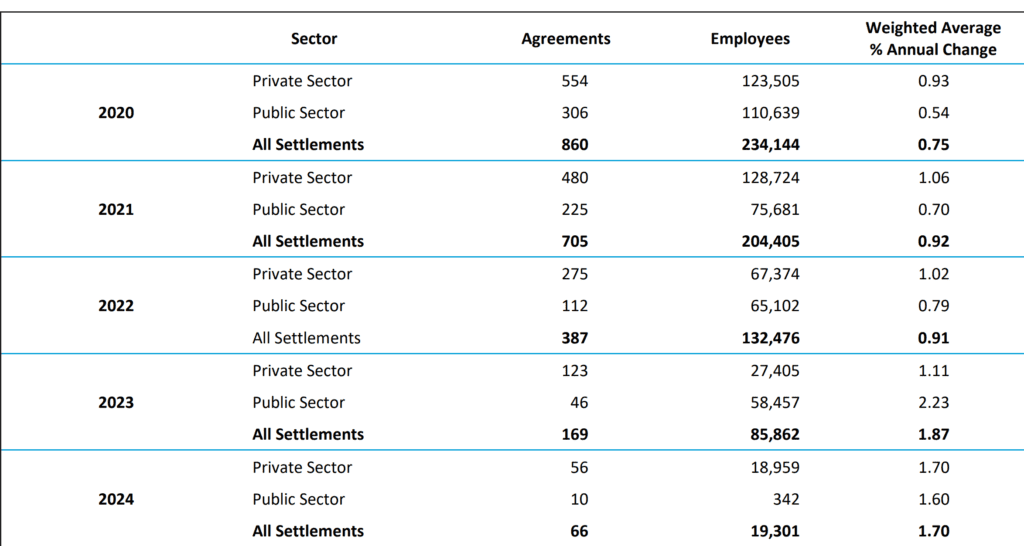Performance Managing the Narcissist
What is a narcissist?
Roughly 1% of the general population suffers from the DSM-5 recognized Narcissistic Personality Disorder. [i] Those with this condition must be supported and accommodated with guidance from medical professionals. Performance management, including various progressive discipline streams, is rarely appropriate under those circumstances. To be clear, Narcissistic Personality Disorder is not the focus of our discussion today.
Instead, we focus on trends, traits and behaviour prevalent in today’s workplace culture.
A more significant proportion of the population has narcissistic traits (again, this is in contrast to the DSM-5 disorder). In fact, to varying degrees, narcissistic traits are increasingly dominant within the general population, at a rate currently sitting at 65%[ii].
Evolving Safety and Employer Liability Concerns
This discussion does not intend to come from a place of judgment. Nevertheless, we must not turn a blind eye to those who act on the impulses arising from a narcissistic disposition, negatively affecting their behaviour towards others. This behaviour can create significant workplace challenges, resulting in psychological and emotional harm which is possibly compensable via Workers’ Compensation legislation. This dysregulated and harmful behaviour is what we intend to discuss today.
Possible Causes, and the Self-Esteem Movement Connection
So, what is narcissism? Narcissism is described as “an exaggerated opinion of one’s contribution to society or group, otherwise known as excessive self-love or even egocentric personality. The Psychology Dictionary describes narcissists as ‘[i]ndividuals who express a strong self-love and exaggerated self-opinions.’” [iii]
Many may assume a causal relationship between the pervasiveness of social media and increased narcissism in North American society. Given our present-day context, many are under the impression that the prevalence of social media is the primary factor in society’s narcissistic trend. Studies show that while social media may indeed be a platform for the narcissist, social media is not the cause of the trait. [iv] Studies show that narcissism has more to do with social networks closer to home, with tendencies normally ingrained by the time one is thirteen years of age.
Academics and clinicians realize that increased narcissistic traits in society are partly due to the self-esteem school of thought. Unfortunately, this doctrine is not grounded in being better but instead in thinking one is better than others. [v] The self-esteem school of thought was pervasive for roughly 20 years, and even supplanted into North American school curriculums.
Understanding the Narcissist
Narcissists tend to think highly of themselves and want others to do the same. Furthermore, they also want to feel superior, while exerting power over others. They are highly manipulative and deploy tactics to get what they want. When confronted with barriers to these objectives, they often become angry and resentful and seek retaliation.
Britannica elaborates that the “Narcissists’ positive but insecure self-views lead them to be more attentive and reactive to feedback […] However, not just any response or feedback from others is important to narcissists; they are eager to learn that others admire and look up to them. Narcissists value admiration and superiority more than being liked and accepted. Studies find that narcissists’ self-esteem depends upon the extent to which they feel admired. Moreover, narcissists pursue admiration from others by attempting to manipulate the impressions they create […]They make self-promoting and self-aggrandizing statements and attempt to solicit regard and compliments from those around them. They also respond with anger and resentment when they feel threatened by others. They are more likely to respond aggressively on such occasions and derogate those who threaten them, even when such hostile responding jeopardizes the relationship.” [vi]
The Narcissist at Work
So now, let us set the stage for the narcissist at work.
Narcissists are typically self-centred, lack empathy and understanding, and have disproportionate, aggressive or passive-aggressive reactions to criticism. Narcissists often expect things to go their way and may act out, even retaliate, if colleagues do not reinforce their desire for special status and treatment within the group. They will often not hesitate to depart from past or present truth to defend their self-worth—their self-esteem.
Also, as part of the ruse, “Narcissists like to be associated with higher-status people” [vii]. They seek to associate with those superior in title or status within the organization and treat those higher in the organization chart much differently than they would equal or subordinates. This inconsistency can sometimes tend to create a “blind spot” even for seasoned managers— at least for a while.
Summaries from Experts
As Industrial Relations and Human Resources practitioners, we are not psychologists.
We necessarily rely on the research of others versus personal expertise. Kindly indulge as we pause to share a few summaries about narcissism, directly from experts.
Manfred Ket de Vries writes, “Furthermore, narcissistic individuals have a strong sense of entitlement. When they don’t receive the special treatment that they believe they deserve, they become very impatient or get quite angry. Given their self-serving mindset, it’s difficult for them to recognize or identify with the feelings and needs of others. Empathy doesn’t come naturally. As narcissists are quite thin-skinned, they have difficulty handling criticism; they very quickly feel hurt, overreact, and get defensive.”[viii]
The narcissist would rewrite history, as Theodore Millon put it, “…to freely transform failures into successes, and to construct lengthy and intricate rationalizations that inflate their self-worth or justify what they believe is their right…” [VII] Theodore Millon and Roger Davis pointed out that narcissists “…remember the past as they would have wanted it to occur, not as it actually happened.” [ix]
“Two review articles in the American Journal of Psychiatry (Russ et al., 2008, and Caligor et al., 2015) note that NPD may…encompasses three major subtypes, with varying degrees of clinical severity and prognosis…[the less severe]…is less likely to have psychiatric comorbidity and may not necessarily meet the functional impairment criterion for NPD, except during periodic crises or unexpected failures (such as losing a job or undergoing a divorce). They appear to be outwardly successful and generally maintain their ego stability, but they still maintain an essential NPD personality structure; issues with entitlement and self-centeredness may lead to interpersonal issues and exploitative, unempathetic behaviours.”
Containing the Narcissist
If you notice an employee acting in this way, remember it is a complex issue. A multi-pronged approach will likely be necessary. Before we get into coaching tactics, let us spend a moment on containment. This is essentially harm reduction. It is crucial to keep in mind that it is our other employees who will most likely suffer the wrath of the unmitigated narcissist.
There is power in numbers. Creating a strong team environment can neutralize the behaviour and set a stage for encouraging peer feedback, supported by leadership. Feedback from the group dynamic may be a more receptive forum for the narcissist than feedback from one individual. [x] Safe, group work settings are environments in which those with narcissistic tendencies will respond. Their need for affirmations will drive their engagement with the group’s peer regulation and cultural norms. [xi]. However, it is important to avoid putting narcissists on teams with teammates they can dominate. That would allow the behaviour to fester and will only positively reinforce the undesirable behaviour. [xii]
Our job is to manage the narcissist while maintaining the physical and psychological safety of the rest of our team… “a manager’s biggest worry should not be losing their narcissist; it should be that other team members will be the ones to resign, tired of the way narcissists need to be catered to. It’s hard to deal with a narcissist’s sense of entitlement, lack of empathy, and need to feel special.” [xiii] Until the narcissist learns to regulate their behaviour consistently, it will be a precarious balancing act to manage the narcissist, protect their safety, and inspire patience within the rest of the team.
When things go awry…
As is normal through working within an organization, micro-blunders happen. While (fortunately) not all places have office politics akin to contact sports, even the tamest environments involve:
- Inadvertent slights between co-workers;
- Unequal or inequitable distribution of credit or gratitude for jobs well done; or,
- Assigning real or perceived blame when outcomes differ from expectations.
Offices are not sanitary lab environments. They are human and thus, messy (some more than others). Real or perceived slights will happen. It is not a question of if but rather, when.
Those prone to narcissistic tendencies, who lack the mindfulness and coping skills required to regulate reactions, will start to run into trouble when these slights occur – even under reasonably healthy workplace conditions. This is when reactions become disproportionate, and it is when work colleagues are more likely to notice disruptions from the individual.
These everyday slights are likely overly felt by the narcissist. As author Kristin Neff explains, “Any threat to [their] mental representation of who [they] are, therefore, feels like an actual, visceral threat, and [they] respond as powerfully as a soldier defending [their] very life.” [xiv]When narcissists receive put-downs from others, their retaliation can be fast and furious, even violent. Narcissistic anger serves an essential function for the narcissist: it deflects negative attention away from the self toward others, who can then be blamed for all the dark emotions being experienced.” [xv] And, as James McDonald Jr (a lawyer) pointed out, “When the narcissist ultimately fails, the fall will be long and hard. Litigation is likely to result, so it is essential that the narcissist’s performance problems, disruptive conduct, and abuse of others be thoroughly documented as they occur.” [xvi]
Organizations and managers will need to adopt thoughtful and deliberate practices when confronted with these situations.
Performance Managing
Managers: Prevent the Narcissist from Hiding Out on Your Blind Side
How the narcissist treats their superiors often differs remarkably from how they treat those lateral to them and also from how they treat their subordinates. Managers must be on-guard for the possibility of one of their direct reports hiding out in their “blindside.”
Suppose an employee always seems to have the correct answers for you but consistently experiences relationship trouble from co-workers and their subordinates. It would be wise to reserve judgment and do a little investigation.
Narcissists are people-pleasers to those in elevated positions, so they will be skilled in sending their manager comforting signals about their performance. There are reasons why organizations promote narcissists before their true character becomes apparent. While it is an overused phrase, “trust but verify” makes sense in this case. It is worth investing effort to understand the perspectives of coworkers or subordinates who may be having a difficult time with your employee. The last thing you want to do is enable a narcissist to sit on your blind side, operating under your authority, while leaving a path of destruction in their wake.
Be wary of requests for special treatment. It is a common sign you are dealing with a narcissist, and giving in will only reinforce the behaviour. Also, conceding will create resentment among other team members.
If performance interventions are required, take a structured approach and determine what performance management or discipline stream you are on. Stick to a linear discipline stream unless new facts come to light that inspires you to change course. A transparent, and frankly boring, performance management approach will be helpful later. If possible, remain on a linear progressive discipline path (Step 1, 2, 3). Take notes and keep a personal file. These files don’t lend themselves well to culminating incident justifications, mainly due to the subjectivity associated with interpersonal strife. If things go sideways, it is likely to get litigious.
We recommend against reinforcing behaviour by succumbing to the narcissists’ desire for special treatment[xvii], maintaining a principle and rules-based approach, and keeping to straightforward performance management messaging.
Failure to do this leaves you vulnerable. When you become a threat to the narcissist, they will retaliate against you and exploit any weaknesses you have revealed to them while handling the file.
Having the Discussion
State the Issue, knowing it will likely be taken very personally (Have an HR staff person Witness the exchange)
When confronting the narcissist, be direct. Take extra effort to separate the behaviour from the person as you explain your concern. Example: “You bring much skill and passion to the team. Reacting versus responding and talking at or about people instead of to them is causing a great deal of friction. That behaviour is creating problems for our department and preventing us from meeting our objectives. Your gossipping and emotional, impulsive responses must stop. We need you to take a moment before responding to gather yourself. We need you to raise concerns directly with your co-workers and avoid gossiping. Can you make these adjustments?”
Describe what you will MONITOR and Book a Follow-Up Meeting
Example: “Unless something comes up from a safety or ethical perspective, I want concerns you have with others to be brought to my attention with the other person present so that we can all talk about it together. That way, you can also see how I communicate while we get out of the practice of talking about, rather than to our colleagues. I will try to provide a good example for you. Also, I will drop in to observe a few of your team meetings over the next couple of months. Let’s get together in May to check in and review where we are at with this. If you have questions, want coaching or support in making this behavioural change, please drop in.”
Continue to check in, and offer positive feedback whenever the manager sees authentic effort on the part of the employee to change. Remember, people usually exhibit and cement narcissistic tendencies by thirteen years of age. It will take effort and focus for the employee to adjust their responses and communication style. For instances where behaviour is not changing and is causing safety concerns or psychological harm to work colleagues, escalate dispassionately using sound progressive discipline practices. Managers need to protect themselves by keeping good records and having witnesses available for critical discussions where possible.
Try Not to Further Oppress the Oppressed
Lateral Violence and its Coexistence with Maladaptive Narcissistic Behaviour
We recommend that companies and managers consider the broader issue of lateral violence. This type of violence may be suppressed through preventative measures and talking spaces. If unmanaged, it may have to be addressed as an after-the-fact mitigating factor weighed against Occupational Health and Safety obligations to ensure employees are free from physical and psychological harm.
There is no doubt a significant overlap between the maladaptive narcissistic behaviour and “Lateral violence [which] is a term that describes the way people in positions of powerlessness…direct their dissatisfaction inward toward each other, toward themselves, and those less powerful than themselves…Lateral violence is believed to occur worldwide in minorities and particularly Aboriginal peoples…” [xviii] “Lateral violence is the expression of rage and anger, fear and terror that can only be safely vented upon those closest to us when we are being oppressed.” In other words, victims of a situation of dominance turn on each other instead of confronting the system that oppresses them. The oppressed become the oppressors. [xix] It is also “a form of bullying that includes gossip, shaming and blaming others, backstabbing and attempts to socially isolate others.” [xx]
This is particularly accurate in instances of colonialism, trauma, and intergenerational trauma; these must be addressed and recognized as complex issues. “Research suggests that as many as 95% of bullying [experienced by Aboriginal People] occurs amongst Aboriginal people themselves.” [xxi] This should not be surprising as, “[t]he roots of lateral violence lie in colonization, oppression, intergenerational trauma, powerlessness and ongoing experiences of racism and discrimination, factors mainstream bullying programs do not take into account.[xxii]…[Society]…can (inadvertently or deliberately) create the environment for lateral violence through a lack of recognition and engagement and by pitting groups against each other.[xxiii]
Employers need to look inward to check their organizational health. Have an honest look to see if factors at work inflame or exacerbate the issue. While employers must address bullying and psychological harm individually, the systemic aspects will only improve through holistic organizational, community and individual approaches.
Getting a handle on Lateral Violence
Within the organization, and preferably before and separate from specific occurrences, “[n]aming lateral violence is the first step towards exerting control over it, and [is in itself] an act of prevention.[xxiv] Therefore, awareness campaigns, communications, sharing circles, and peer discussions can significantly improve and de-risk this issue. “To tackle lateral violence, Richard J. Frankland suggests that you “out it. Name it for what it is, a destroyer of Indigenous culture and life. Publicly admit it is happening and then take steps and measures to deal with it… Find ways to deal with it, end it, eradicate it from our lives and communities.” [xxv]. “Others suggest to apply traditional ways of resolving disputes, such as learning and healing circles and shared care.” [xxvi]
More companies are “being made aware of lateral violence and the effects it can have on their staff, as well as the overall performances of employees. Businesses are taking this problem seriously, and people who are caught engaging in acts of lateral violence could find themselves being reprimanded or dismissed from their positions.” [xxvii] “Awareness of the problem is the first step in resolving it and, like sexual harassment, lateral violence should be discussed with employees so that they are aware of what it is and how to report it if they are victims of it or see it happening. Preventing lateral violence will help create a more harmonious atmosphere on the job.” [xxviii]
Conclusion
Narcissism is prevalent in today’s workplace, with an estimated 65% of the general population estimated to possess narcissistic traits to varying degrees. It is almost the case that if you can’t spot the narcissist in the room, you’re probably it.
Promoting and allowing space for healthy discussions within your workplace, ensuring all employees’ safety, including psychological safety, assists managers and companies in meeting this issue with maturity and compassion.
Workforce Delivery Inc. thanks you for your time today and wishes you all the best on your journey.
[i] https://en.wikipedia.org/wiki/Narcissism
[ii] Self-Compassion, pg. 147
[iii] https://psychologydictionary.org/narcissism/
[iv] https://www.psychologytoday.com/us/blog/compassion-matters/201211/is-social-media-blame-the-rise-in-narcissism
[v] Self-Compassion, pg. 140
[vi] https://www.britannica.com/science/narcissism
[vii] https://www.management-issues.com/opinion/6207/how-to-manage-a-narcissist/
[viii] https://hbr.org/2017/05/how-to-manage-a-narcissist
[ix]Millon, T. and Davis, R. (2000), Personality Disorders in Modern Life, Wiley, New York, p. 294. In https://winning-teams.com/narcissism_manage.html
[x] https://hbr.org/2017/05/how-to-manage-a-narcissist
[xi] https://hbr.org/2017/05/how-to-manage-a-narcissist
[xii] https://www.management-issues.com/opinion/6207/how-to-manage-a-narcissist/
[xiii] https://hbr.org/2017/05/how-to-manage-a-narcissist
[xiv] Neff, Kristin. Self-Compassion (p. 151). HarperCollins e-books. Kindle Edition.
[xv] Neff, Kristin. Self-Compassion (pp. 143-144). HarperCollins e-books. Kindle Edition.
[xvi] McDonald, J. J. (2005), The Narcissistic Plaintiff, Employee Relations Law Journal, Vol. 30, No. 4, p. 97 in https://winning-teams.com/narcissism_manage.html
[xvii] https://www.management-issues.com/opinion/6207/how-to-manage-a-narcissist/
[xviii] https://www.creativespirits.info/aboriginalculture/people/bullying-lateral-violence#fn1
[xix][xix] https://www.creativespirits.info/aboriginalculture/people/bullying-lateral-violence#fn5
[xx] https://www.creativespirits.info/aboriginalculture/people/bullying-lateral-violence#fn1
[xxi] https://www.creativespirits.info/aboriginalculture/people/bullying-lateral-violence#fn3
[xxii] https://www.creativespirits.info/aboriginalculture/people/bullying-lateral-violence#fn3
[xxiii] https://www.creativespirits.info/aboriginalculture/people/bullying-lateral-violence#fn6
[xxiv] https://www.creativespirits.info/aboriginalculture/people/bullying-lateral-violence#fn8
[xxv] https://www.creativespirits.info/aboriginalculture/people/bullying-lateral-violence#fn1
[xxvi] https://www.creativespirits.info/aboriginalculture/people/bullying-lateral-violence#fn3
[xxvii] https://futureofworking.com/lateral-workplace-violence/
[xxviii] https://futureofworking.com/lateral-workplace-violence/




Recent Comments